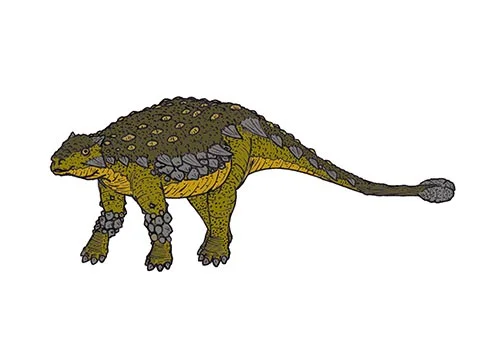Saichania (Beautiful one)

Sie-chan-ee-ah
Teresa Maryańska - 1977
Herbivore
Estimated 6.6 meters long
Armoured Dinosaur
S. chulsanensis (type)
Mongolia, Nemegt Basin - Barun Goyot Formation, China
Late Cretaceous, 80 million years ago
Saichania Facts
Saichania, meaning “beautiful one,” is a genus of ankylosaurid dinosaur that lived during the Late Cretaceous period, about 80 million years ago. Its fossils have been found in Mongolia and China, and it is known from several well-preserved specimens.
Like other ankylosaurids, Saichania was a heavily-armored dinosaur with a wide, flat body and a short, stocky tail. Its entire body was covered in bony plates called osteoderms, which served as a form of protection against predators. Its head was also heavily armored, with a bony cap covering the top of its skull and spikes projecting from its cheeks and snout.
Saichania was also known for its clubbed tail, which was covered in large, bony knobs that could be used to defend itself against predators. The tail was relatively short compared to other ankylosaurids, which may have made it more maneuverable and better able to strike predators with its tail club.
Based on the structure of its teeth and jaws, scientists believe that Saichania was an herbivore that primarily ate tough, fibrous plants. It may have used its beak-like mouth to crop vegetation close to the ground and its powerful jaws to grind it up.
Saichania is an important example of the diversity of ankylosaurid dinosaurs during the Late Cretaceous period. Its well-preserved fossils have provided valuable insights into the anatomy, behavior, and evolution of these fascinating creatures, and continue to be a subject of study and fascination for paleontologists and dinosaur enthusiasts alike.



